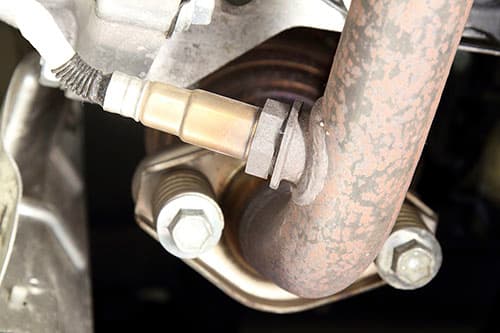
By Rick Popely, Cars.com
Oxygen sensors are not among the maintenance items that need to be replaced regularly, such as oil and air filters, so they typically are replaced only when they fail.
Oxygen sensors are a critical component of the fuel and emissions systems because they monitor the amount of oxygen in the exhaust and transmit that information to the engine computer, which adjusts the air-fuel mixture accordingly. If an oxygen sensor fails, the engine computer won't be able to correctly set the air-fuel mixture, which could result in lower fuel economy, higher emissions and damage to other components, such as an overheated catalytic converter.
No vehicle that we're aware of has a warning light that signals when an oxygen sensor has failed, so you have to rely on other vital signs to alert you when there is a problem, such as the check-engine light on the dashboard illuminating.
An illuminated check-engine light could be a sign of a more serious issue, such as with the catalytic converter, or something as minor as a loose gas cap, so further investigation is always required. Any repair shop should be able to read what triggered your check-engine light, and many auto parts stores perform this service for free.
Other symptoms of a bad oxygen sensor include a rough idle, misfiring spark plugs, lack of power, stalling or a significant increase in fuel consumption. Those symptoms could also be indications of other problems, but the EPA says that replacing a bad oxygen sensor can improve fuel economy by as much as 40 percent, so clearly that is one place to look if your vehicle develops a greater thirst for gas.
A new oxygen sensor can cost from less than $100 on some models to $300 or more on others, but that doesn't include labor, which can vary widely by vehicle because of where the sensors are located.








